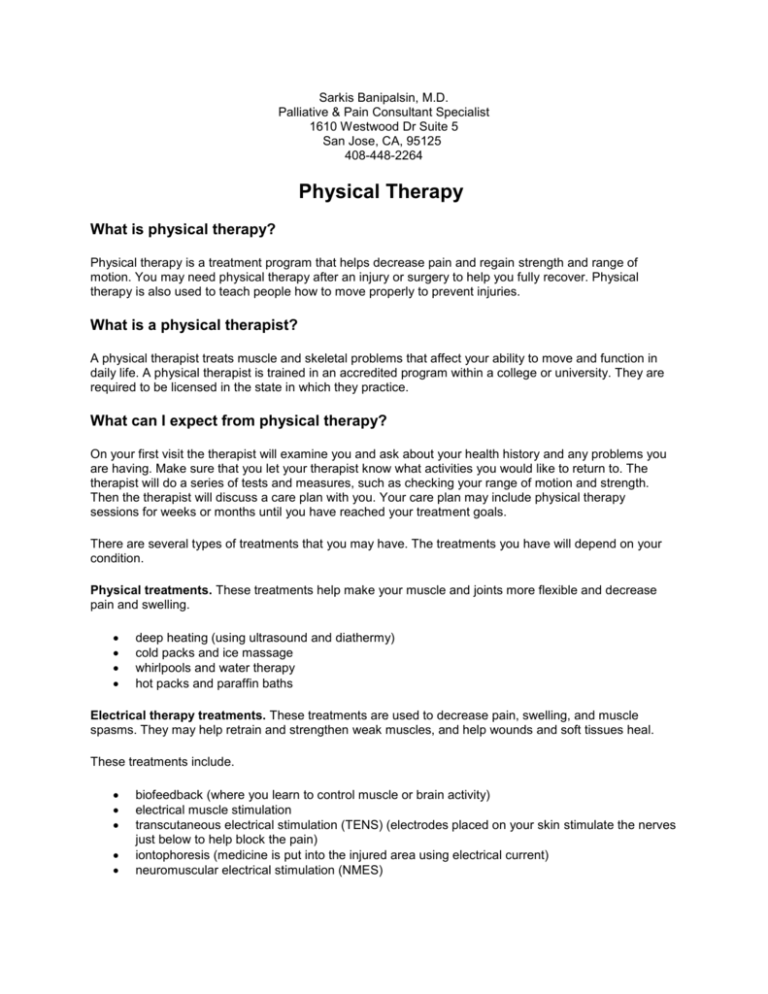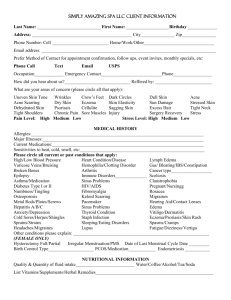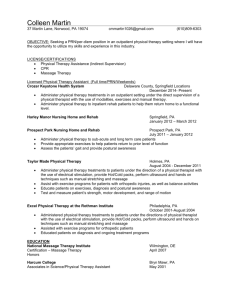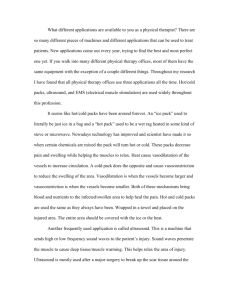
Sarkis Banipalsin, M.D.
Palliative & Pain Consultant Specialist
1610 Westwood Dr Suite 5
San Jose, CA, 95125
408-448-2264
Physical Therapy
What is physical therapy?
Physical therapy is a treatment program that helps decrease pain and regain strength and range of
motion. You may need physical therapy after an injury or surgery to help you fully recover. Physical
therapy is also used to teach people how to move properly to prevent injuries.
What is a physical therapist?
A physical therapist treats muscle and skeletal problems that affect your ability to move and function in
daily life. A physical therapist is trained in an accredited program within a college or university. They are
required to be licensed in the state in which they practice.
What can I expect from physical therapy?
On your first visit the therapist will examine you and ask about your health history and any problems you
are having. Make sure that you let your therapist know what activities you would like to return to. The
therapist will do a series of tests and measures, such as checking your range of motion and strength.
Then the therapist will discuss a care plan with you. Your care plan may include physical therapy
sessions for weeks or months until you have reached your treatment goals.
There are several types of treatments that you may have. The treatments you have will depend on your
condition.
Physical treatments. These treatments help make your muscle and joints more flexible and decrease
pain and swelling.
deep heating (using ultrasound and diathermy)
cold packs and ice massage
whirlpools and water therapy
hot packs and paraffin baths
Electrical therapy treatments. These treatments are used to decrease pain, swelling, and muscle
spasms. They may help retrain and strengthen weak muscles, and help wounds and soft tissues heal.
These treatments include.
biofeedback (where you learn to control muscle or brain activity)
electrical muscle stimulation
transcutaneous electrical stimulation (TENS) (electrodes placed on your skin stimulate the nerves
just below to help block the pain)
iontophoresis (medicine is put into the injured area using electrical current)
neuromuscular electrical stimulation (NMES)
Manual therapy. This refers to any "hands-on" treatment done by the therapist. The purpose is to
increase your range of motion and strength and to decrease pain and swelling. Manual therapy may
include.
massage
movements that help your joints and soft tissues
Exercise. Therapeutic exercise offers many benefits. It can help restore and maintain strength, joint and
muscle flexibility, balance, coordination, posture, and endurance. Many physical therapy treatments
include some form of exercise.
Traction. This treatment uses a machine to mildly separate the joints of the spine and reduces spinal
compression. Traction is most often used for people with neck or back pain.
Can the therapy be painful?
While the overall goal of physical therapy is to reduce your pain, the process may sometimes be painful. It
is important to tell your therapist if you have any discomfort during or after your treatment. Many
therapists suggest the use of ice on the painful area right after doing any exercise.
How long will I go to physical therapy?
How often and how long you have physical therapy depends on your condition and your goals. Many
people are discharged from physical therapy with instructions to keep doing certain exercises at home.
These exercises may help prevent future injury.
Do I need a referral?
In most cases, a healthcare provider will refer you to physical therapy. In some states, you have direct
access to physical therapy and do not need a referral. It's a good idea to check with your insurance
company about your coverage for physical therapy.
Written by Phyllis Clapis PT, DHSc, OCS.
Published by RelayHealth.
Last modified: 2010-02-12
Last reviewed: 2009-12-28
This content is reviewed periodically and is subject to change as new health information becomes available. The information is
intended to inform and educate and is not a replacement for medical evaluation, advice, diagnosis or treatment by a healthcare
professional.
References
Adult Advisor 2011.1 Index
© 2011 RelayHealth and/or its affiliates. All rights reserved.












